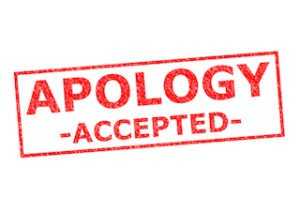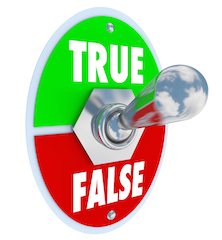Do you sell a lot of variable annuities? Then you surely know they attract regulatory scrutiny like magnets pick up metal shavings. The good news is it’s easy to ward off problems by avoiding certain “hot” practices. There are five main ones, experts say:
- Inadequate/improper disclosures
- Insufficient prospect/client education
- Abusive sales tactics, especially of seniors
- Unwarranted 1035 exchanges
- Preventable surrender charges
Pushing the envelope in any one of the above items — or in multiple items — greatly increases your chances of running afoul of your compliance department orregulator. To avoid client complaints and errors-and-omissions insurance claims, and regulatory enforcement actions, make sure to sell variable annuities the right way. Adhering to the following checklist will keep you in the safe zone.
Variable Annuity Compliance Checklist
- Know exactly what you’re selling. Variable annuities are complex products, especially when they involve living benefits. Study your product provisions, stay current, and allow adequate time during client meetings to explain the mechanics of these contracts.
- Do your due diligence on the issuing insurer. Don’t take your wholesaler’s word that the insurer’s solvency is bulletproof. Check with the rating authorities and others who follow the company.
- Deliver a variable annuity prospectus to all prospects and strongly encourage them to read it. Also, ask them to sign a document confirming they received the prospectus. Hopefully, clients who read this document will more likely understand how their annuity works — and be less likely to complain or sue when something unexpected happens.
- Create a low-pressure sales environment so that prospects can’t claim you coerced them into buying.One way to do this is to avoid closing a variable annuity sale during the first meeting. Always give people a chance to study their prospectus and to think things over prior to the second meeting. This will reduce regrets and errors-and-omissions insurance claims later on.
- Pay special attention in your sales interviews to the issues of volatility and liquidity. Make sure prospects understand that variable annuity principal is subject to change based on the performance of financial markets. Plus, explain variable annuities should be held for long periods, making them inappropriate for people who might need their money back in several years. Regarding the latter point, always carefully probe the prospect’s ability to cover his or her retirement living expenses, as well as the potential need to take required minimum distributions (RMDs). The goal: to avoid selling a variable annuity to someone who will need to withdraw money during the surrender period.
- Once the insurer completes new-business processing and issues the policy, deliver the contract promptly to the client. At that time or at a future meeting, again go over the key contract provisions one more time.
- Be extremely cautious when recommending a variable annuity replacement to a client. Never let your desire for another commission sway your objectivity. Rather, be prepared to justify the replacement on the basis of strong financial benefits for the client.
- Avoid replacing contracts when the client is still subject to a surrender charge or contingent deferred sales charge. This is especially true for senior clients.
Have a comment or would like to add your own tips or ideas on compliant selling of variable annuities? Please visit this new thread: VA Compliance Checklist
- Recommend so-called L-share variable annuities with great care. These contracts shorten the surrender period, but bring higher fees and commissions. If you can’t document the prospect’s need for a shorter holding period and willingness to assume higher costs in return, then do not recommend such products.
- If an exchange generates surrender charges, make sure the financial benefits outweigh those charges. And be especially careful to make this case if the client is a senior. In general, the older the client, the stronger case you’ll need to make.
- When discussing variable annuity death benefits, make sure the prospect understands that the benefit will only be paid if the insured dies. It is not a guarantee of account value in times of market volatility.
- If a prospect is interested in a “life only” variable annuity — i.e., one that does not pay a death benefit to his or her beneficiary — then make sure the person and beneficiary understand this. Then ask the insured to sign a release to that effect.
- Avoid the appearance of “double dipping” when placing a variable annuity within an investment advisory wrap account. If the annuity pays you a commission, be sure to disclose this to the client and don’t include the value of the annuity when calculating your investment management fee.
- Stay in touch with variable annuity clients and assist them with periodic rebalancing of their product’s investment sub-accounts. In times of market volatility, frequent contact will help to prevent emotional decisions, resentment, and subsequent errors-and-omissions insurance claims.
- Study the tax implications of your products so you can give general advice to your clients. However, refer them to their tax advisor for specific questions in order to limit your errors-and-omissions insuranceliability.
- Finally, if a carrier offers to buy out a client’s variable annuity or to de-risk it by removing a living benefit, carefully assess the pluses and minuses of the offer. If the client decided to accept it, document the rationale in writing and get the client’s signature.
Have a comment or would like to add your own tips or ideas on compliant selling of variable annuities? Please visit this new thread: VA Compliance Checklist
Harry J. Lew is Chief Content Officer at EOforLess.com.
For more information on affordable errors and omissions insurance for low-risk financial advisors, visitE&OforLess.com. For information on ethical sales practices, please visit the National Ethics Association’sEthics Center













